14. Eye (Un Chien Andalou, 1929)
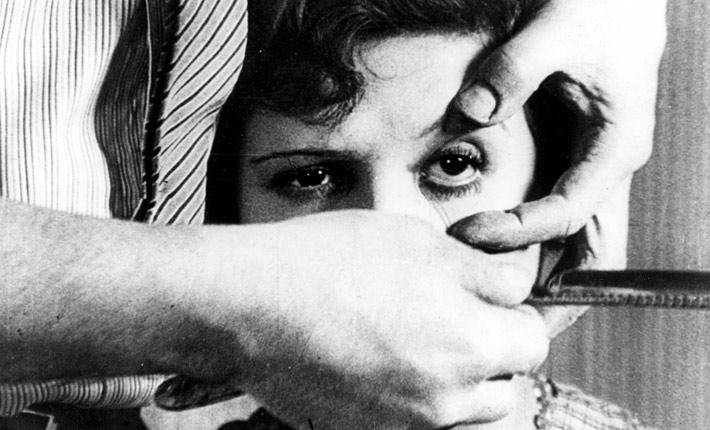
The scene: A man sharpens his razor blade, goes to the terrace, and looks at the moon in the sky; a woman sits calm with a man holding her face with a razor blade close to her eye; a cloud passes by the moon; a close up of a razor blade cutting up an eyeball.
Why: Although many surreal things happen during its 17-minute run time, it’s particularly the cutting of the eye that stands out. It’s the balance of the realistic animal’s eye that comes in continuation of just having seen the young woman with a razor blade close to her eye, and it’s the suddenness of its appearance as one of the first scenes of the film.
There are also, of course, the bugs crawling out of the fake hand that does also shock quite a bit later in the film, but even watching the short film today and knowing the trick behind it, the visual of the eye getting cut open is both confusing, enticing, and shocking.
13. Captive bolt pistol (Benny’s Video, 1992)

The scene: Benny invites a girl he has seen outside the local video store to his home. He shows her the video of the pig slaughter, and then he unveils and loads the slaughtering gun. He dares her to discharge it at his chest, but she refuses. He calls her a coward, and then, when he holds it up to her chest and hesitates for a second, she calls him a coward.
This is when he fires the gun, and she falls. Her falling reveals a video monitor behind them, where the audience can see the room. The rest of the scene is seen through this monitor as she tries to crawl away from Benny. As she crawls out of frame, he reloads the gun. Finally, slightly in frame, he fires a last time at her head and her screaming stops. He sits down.
Why: There are different aspects to this scene that make it so terribly wicked. First and foremost, there’s the force and inhumanity of the weapon; then there’s the screaming and her trying to crawl away; his calamity at killing her completely; and then, of course, there’s the fact that they’re both just teenagers.
The daring, the childish want not to be called a coward, as well as the ignorance to the consequences of his actions, are all put into perspective when set against him actually brutally killing her.
12. Driving off (Lilya 4-Ever, 2002)
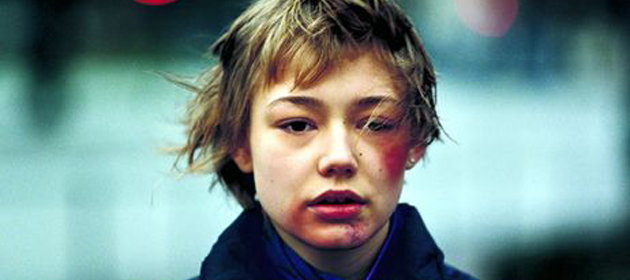
The scene: Lilya’s mother tells her that they together are immigrating to the United States with her new boyfriend. However, in the end, she instead abandons Lilya in the care of her aunt while she and the boyfriend move to the U.S. alone. And so a scene ensues where Lilya, grasping at her last hope of a new life, runs screaming after her mother who drives away in her boyfriend’s car, resulting in Lilya falling to the ground crying her heart out.
Why: This film generally carries quite a lot of tough and heartbreaking scenes, but this particular scene was chosen because it is the first scene where the audience really truly sees the injustice and selfishness that surrounds the young Lilya. There’s something both distressing and provocative, but sadly also true nonetheless, in seeing a mother choose her own happiness and life over her child’s.
Because although it only happens rarely – one would hope – this sort of thing does happen, and maybe that’s what is so terrible and shocking about it. And then, of course, seeing a young girl falling to the ground screaming for her parent to stay with her is just abysmal in itself.
11. The chest (Alien, 1979)
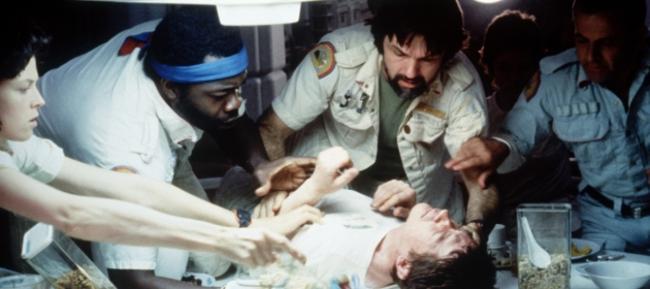
The scene: Previously, an unknown creature has attacked Kane, but as he recovers after being unconscious, everything seems all right for a while, and together the crew eats their final meal before returning to stasis. They’re joking about the quality of the food when Kane suddenly starts to choke and convulse, and they have to lay him down on the table and hold him there. That’s when a creature violently bursts out of his stomach and escapes, Kane is left for dead, and the rest of the crew are completely stunned.
Why: In this scene, it is indeed the shock factor that makes it so famous and talked about. Everything seems calm and nice when suddenly you have a beloved character gasping for air, and then blood and a hideous and scary-looking creature coming out of his body. It’s both bloody, jumpy, and extremely uncomfortable to watch, as one can only imagine what it must feel like.
On top of this, the cast of the scene reportedly wasn’t even told before shooting that the creature would actually come out of actor John Hurt’s stomach, so their shocked reactions are quite genuine and will match that of its audience.
10. Video store (The Piano Teacher, 2001)
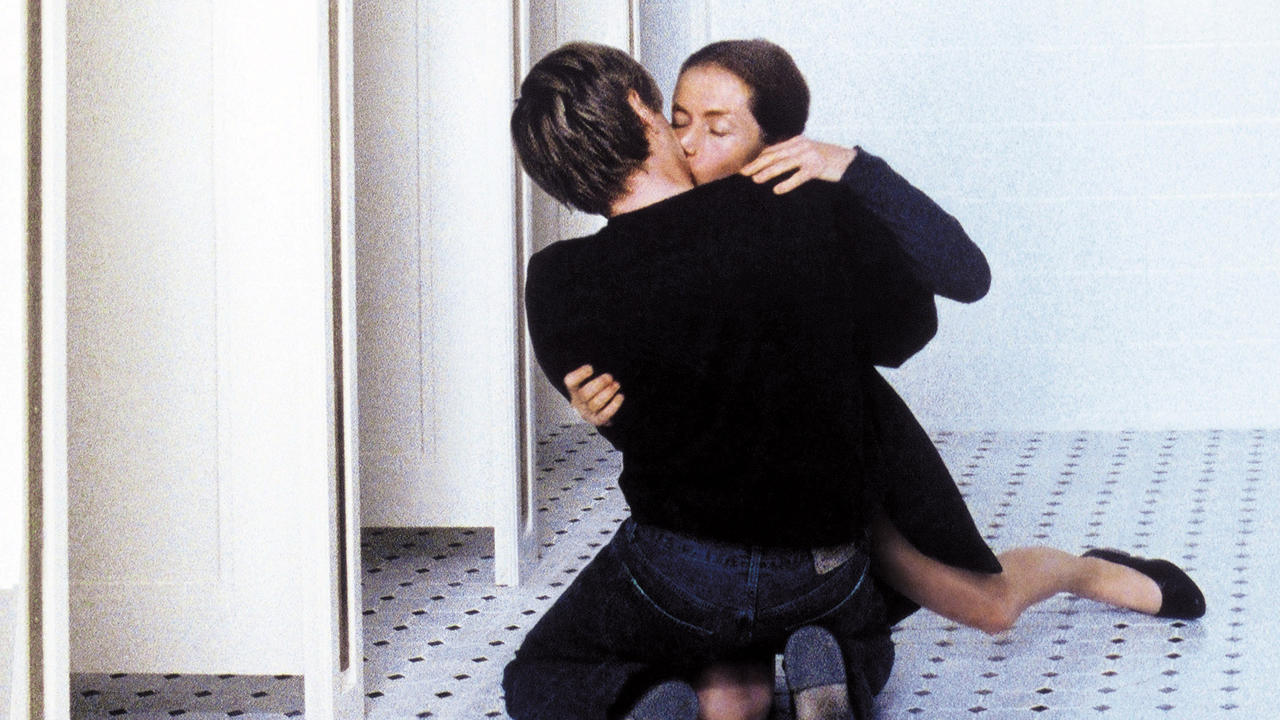
The scene: Erika Kohut walks into what at first seems to be a regular video store. Then, as she goes into a private room, the audience discovers that it is in fact a pornographic video store. Here, Erika watches different screens with porn, and finally she rummages in the small garbage can in the room, and sniffs one of the crumpled-up tissue papers that has been left there presumably by a previous ‘customer.’
Why: This is neither the first, nor the last, Michael Haneke scene to make it to this list. In this case, with “The Piano Teacher,” what makes the video store scene stand so much out and what makes Haneke once again successful at shocking his audience, is the sudden change in the character.
It’s not that she actually changes, of course; it’s just that we as an audience for the first time in the film really truly see who Erika is in her private life. So far, previous scenes have shown us her façade: the neatness, her strict but great teaching methods, her elegance, and her precision.
When she walks into the store, she still carries this persona: she is still tidy and slightly arrogant, and even when she watches these explicit films and presumably sniffs the remains of semen, she still seems like herself. We are introduced to her private life, and because it is so very far from what you would expect from this woman and this beautiful quiet film, and she somehow doesn’t seem fazed by it at all, the scene makes quite the impression.
9. The bag (Audition, 1999)
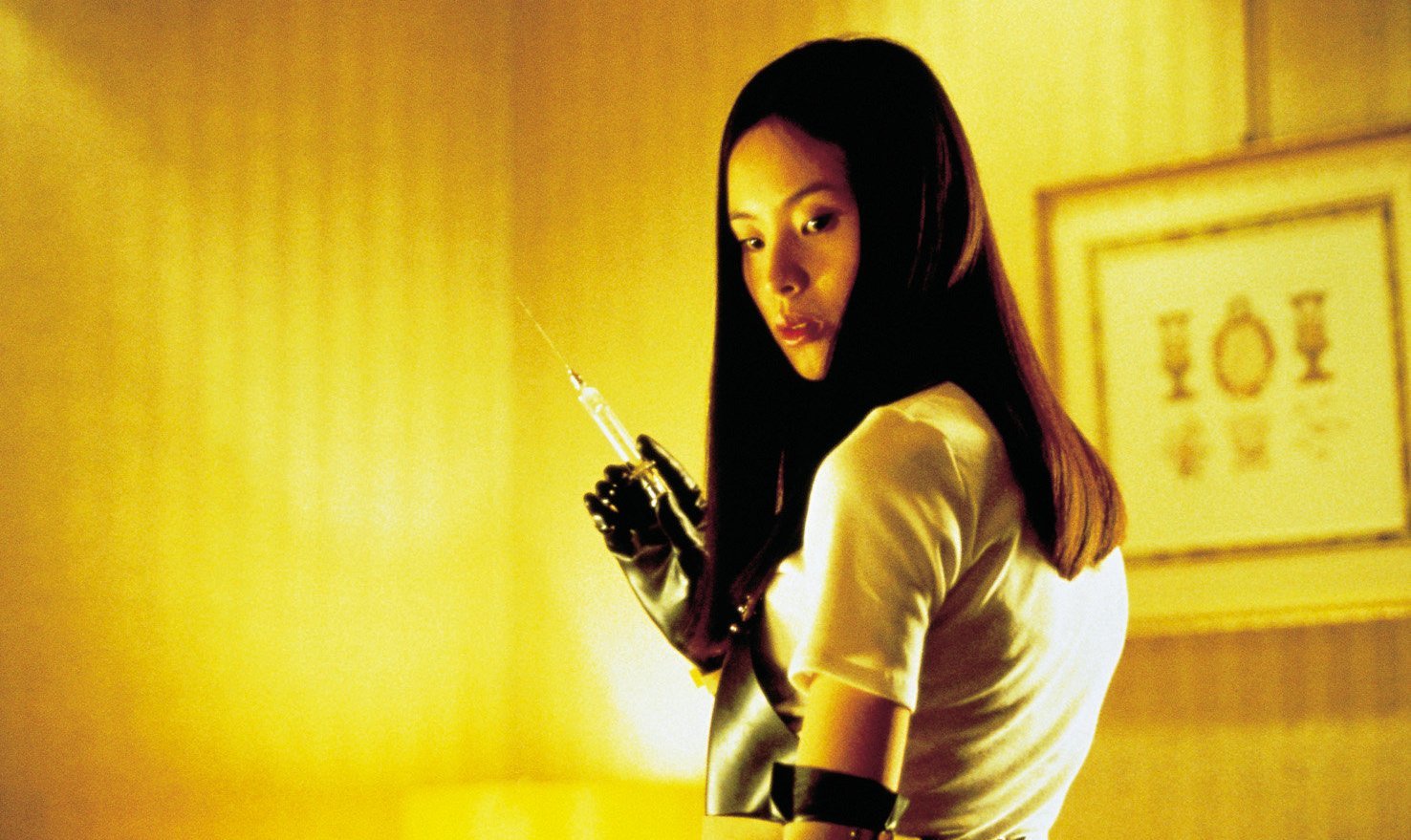
The scene: After meeting the young Asami at an audition to find a new wife, the middle-aged Shigeharu Aoyama has become fascinated by her. In this particular scene, Asami waits to see if Aoyama is interested in her and wants to call her back.
We as audiences know that he should already be suspicious of her because none of the references on her resume seem to be real, and because we watch her sitting in an empty apartment waiting for him to call for days, but Aoyama is blissfully unaware and smitten by her. However, we see her apartment that, other than herself and a phone, only has a big brown bag in it. So, while watching her silently waiting for the phone to ring with her head down, we get a big shock when the phone finally does ring and the bag suddenly moves.
Why: The bag is iconic. We don’t know what is in it, and then, suddenly, it moves. Now, we don’t want to know what is in it, because it definitely can’t be good. There is, of course, something eerie and off about Asami even before we see this scene, but we aren’t exactly sure what it is, and it is therefore this scene and the movement of the bag that confirms our slight suspicions.
Before this scene, there are some surreal but also kind of quirky elements to the story of a lonely man who sets up an audition to find love, and it is only when the bag moves that the film turns into a horror and never goes back. There’s also a definite shock effect in the bag that moves – which the film uses many times afterwards – that, of course, hits the audience, but it is especially the sense that this is just the beginning of something unimaginably mysterious and horrifying that makes this scene so very unforgettable, as well as shocking.
8. The final act and reveal (The Seventh Continent, 1989)
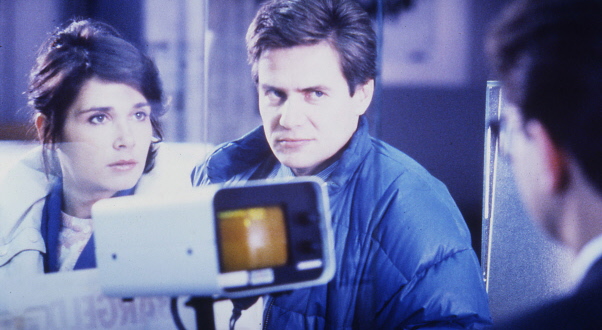
The scene: The third part of the film is when things change. For most of the film, we’ve followed the family of George and Anna, as well as their daughter Eva, and their quiet lives. Then, in the third part, both husband and wife leave their jobs, and reveal that they’re moving to Australia.
However, things are suspicious when at home they start meticulously and devoid of emotion destroy every possession in their house – for example, draining all their money down the toilet, as well as killing their fish. Finally, all three of them commit suicide by overdosing on dissolved in water. Eva dies first, then Anna, and finally George. George notes the time of death of the two others, and puts a question mark beside his own name.
Why: One could argue that the final 20 minutes of the film is more than one total scene. However, seeing as the whole film leads up to this moment, and with it feeling more like a montage than separate scenes, it does work, and has become known as one scene.
What is so disturbing and shocking about this scene is probably the fact that, although they start ruining their home and something is definitely up, there’s no change in the mood or in the character’s behaviours. They’re as quiet as ever, and it is only when Eva breaks down crying about her fish dying that we see any emotion. Then, of course, it is when they start taking the that the audience truly realizes what the family has been doing this whole time, and that is when the shock really settles in.